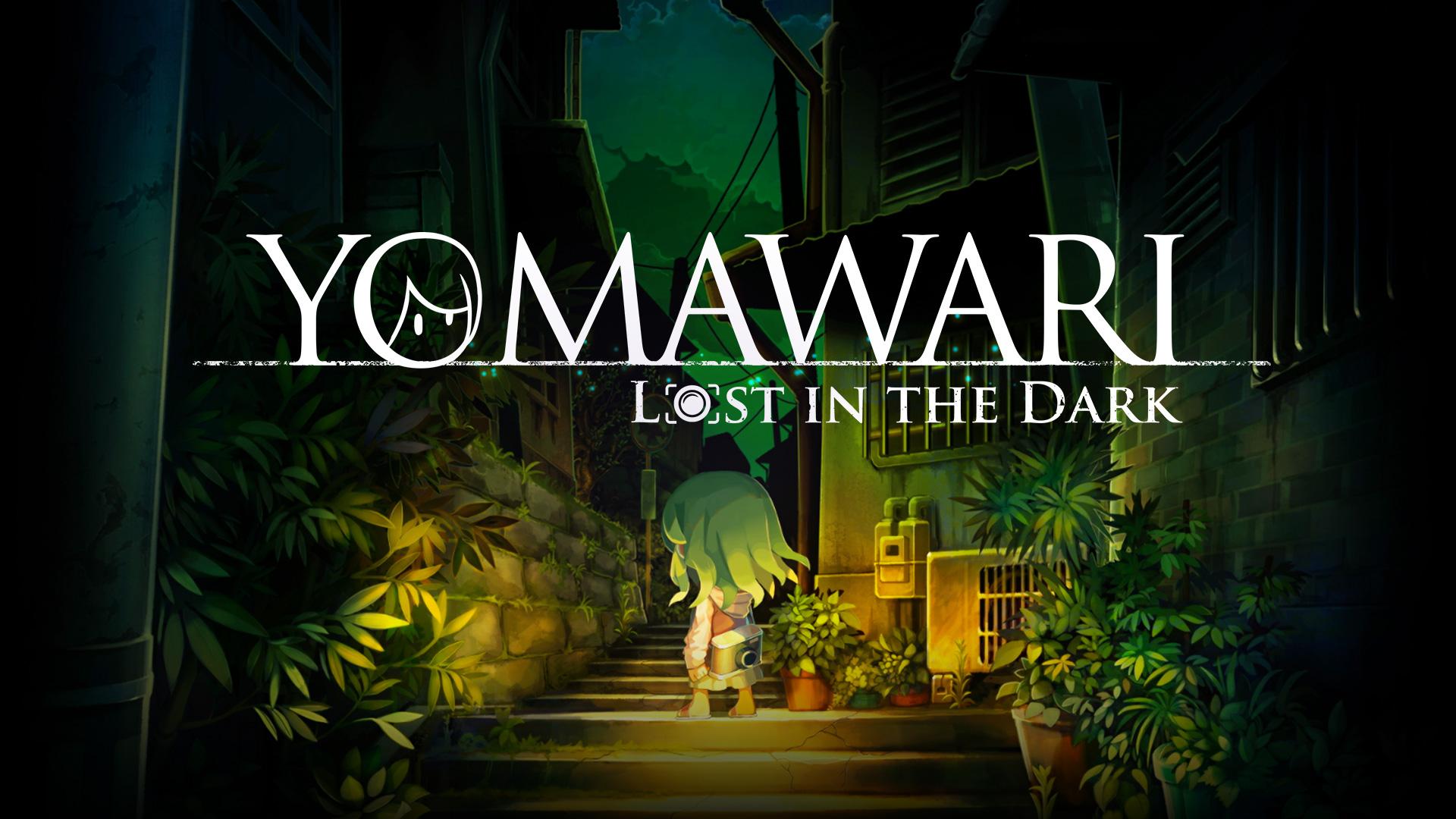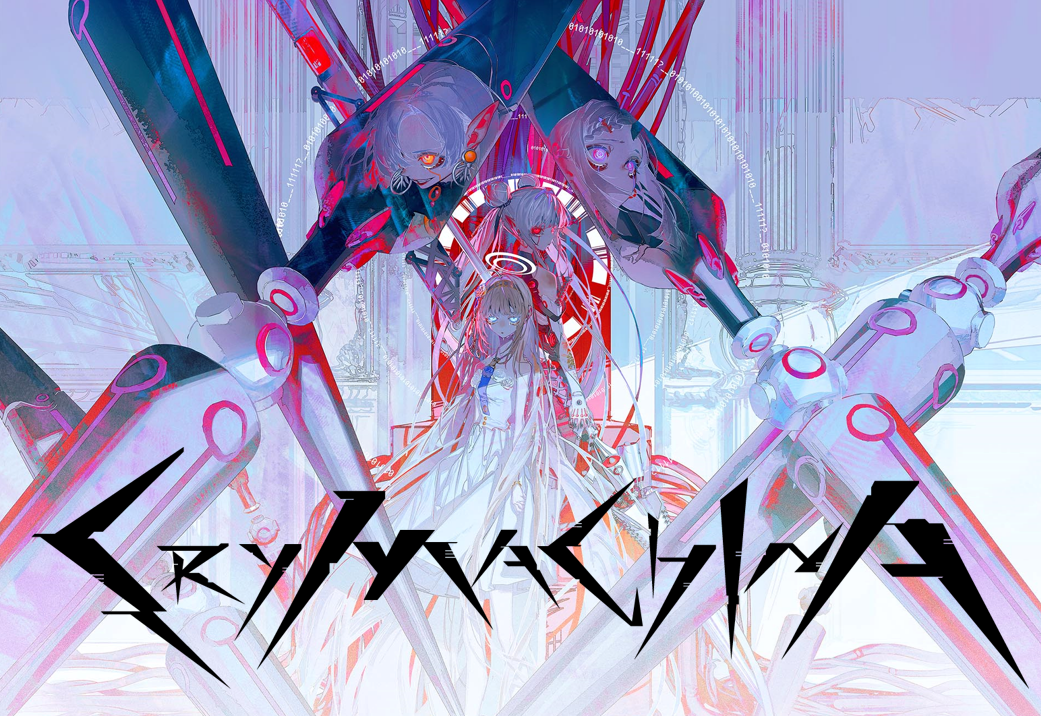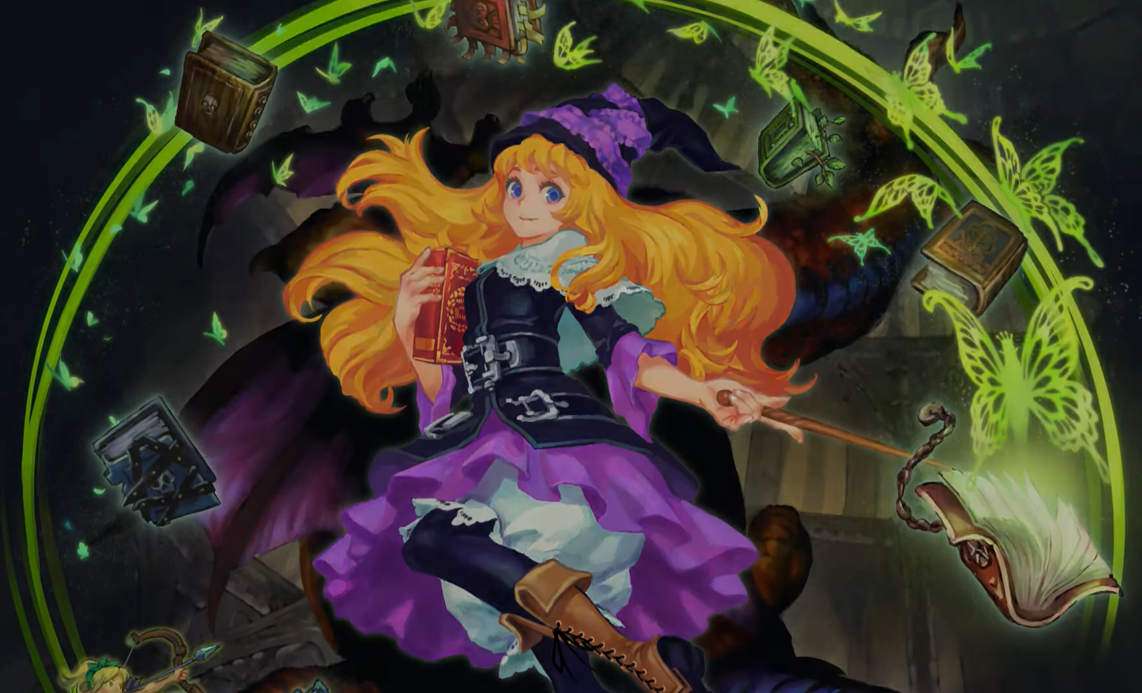Yomawari: Lost in the Dark Review (PS4) – Getting The Heebie-Chibies
Yomawari: Lost in the Dark is the third in the Yomawari series. The series originally launched in the West in 2016 on the PSVita. There’s now a collection of the first two games on Switch in The Long Night Collection. Both Night Alone (the original) and Midnight Shadows (the sequel) have had great reviews for their compelling narratives and visual dichotomy of the cute and terrifying. Whilst there are subtle connections to the previous titles, you can play Yomawari: Lost in the Dark with no context. As someone who’s new to this series, you may be at a disadvantage than those who are fans, for reasons I’ll get into.

Yoma-Where-Are-We?
Before the start of the game you’ll be creating your character. The choices are limited but picking the look and name of your character definitely creates a closer connection to who you play as. From there it opens to your character at school who’s being ostracised and bullied; it’s a tough start as you can’t help but feel bad. A few story moments play out that I won’t spoil but you end up waking in a town at night. You have no memory on how you’ve got there but it’s later revealed that you’re cursed to live the night over and over until you find your memories revealing how to stop it.
I have no context of the previous games, but the story starts off strong and even the way the story is tied to the gameplay had me intrigued at first. To progress you’ll need to find all of your memories before the night’s over. However, the story spends way too long going nowhere. Mild spoilers ahead but, after 8-10 hours I thought I was getting across the finish line, only to be told that I need to go around the game again and find out how to really break the curse.
I was devastated, it felt disrespectful of my time as the final act was signposted even more ambigously than my first-time round. I would’ve received it better if during this period of the game, it had given back what I was putting into it as I progressed. But that wasn’t the case at all, and I don’t even know how to beat it even after an additional six hours of playing.
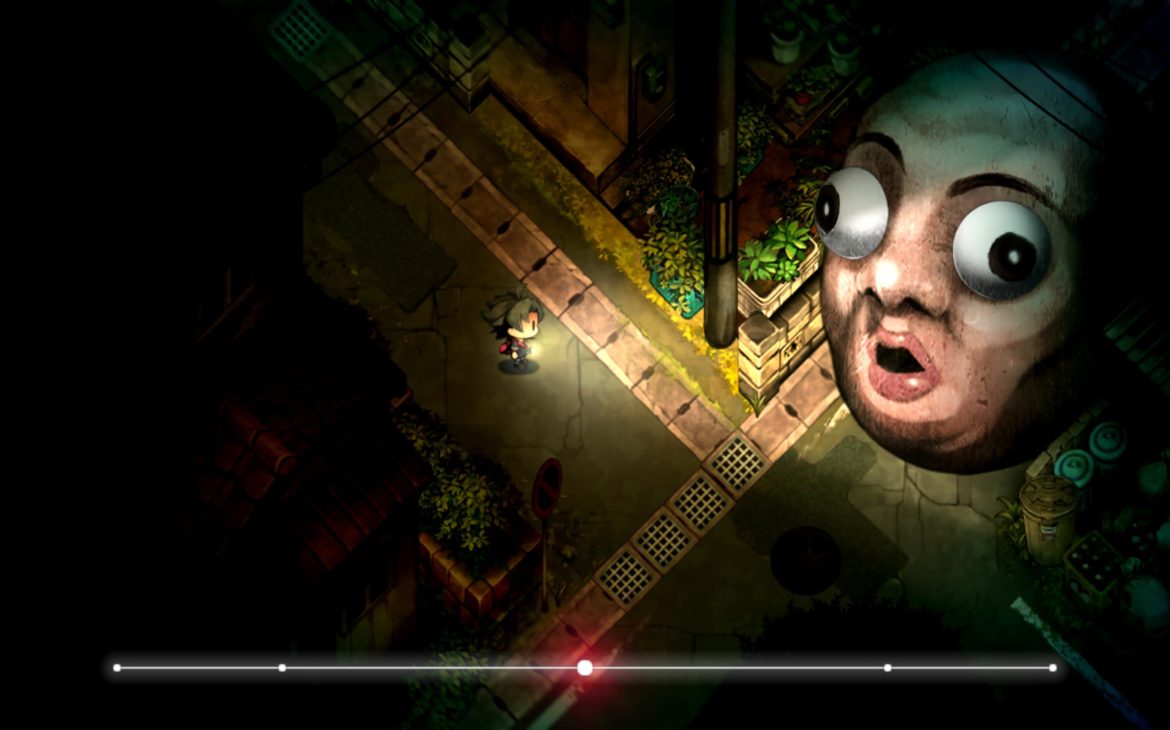
Alone in the Dark
Yomawari plays as a modern isometric survival horror by way of your Amnesias or Outlasts; in the sense that they’re devoid of player combat. Instead you’ll be facing the malicious and sometimes horrifying spirits by… Closing your eyes? This is in favour of the mechanic in the last game where you’d need to find places to hide, and it works! Instead of being limited to a hiding place – I can imagine that becoming frustrating if you can’t find one – you can freely close your eyes wherever. As you’re traipsing through the ghost town your heart rate will elevate when you’re close to spirits. Closing your eyes with L2 and R2 (on PS4) makes the screen black apart from your immediate surroundings. On screen mists of red with their own heartbeat signifies an enemy spirit. It’s a tense moment that puts a pit in your stomach every time, wondering if you’d make it out of an encounter alive.
Closing your eyes isn’t the de facto way of overcoming the evil spirits however, as each enemy type is different. This creates a puzzle element with these encounters in which you learn how to deal with each ghost. Some may require a torch to dispel them, others will only animate if you’re looking in their direction. This makes traversing the town an experience filled with dread. Even after the many hours I’d still be worried something will pop out at me. It’s by far the strongest aspect of the game as throughout the main levels you’re met with different spirits every time, so you’ve never quite sussed the game, all the while the threat of death lurks in every shadow.
You also have a stamina bar that’s tied to your sprinting. Normally it goes down at a standard rate but when you’re closer to spirits it drains faster and if you’re head to head with one it depletes almost immediately. Multiple times I found myself going through even scripted moments of running from the enemy with it always feeling like I wasn’t ever going to make it. Its adrenaline inducing every time and thankfully only a couple of monsters can’t be outrun, as it makes running off scared a viable tactic.
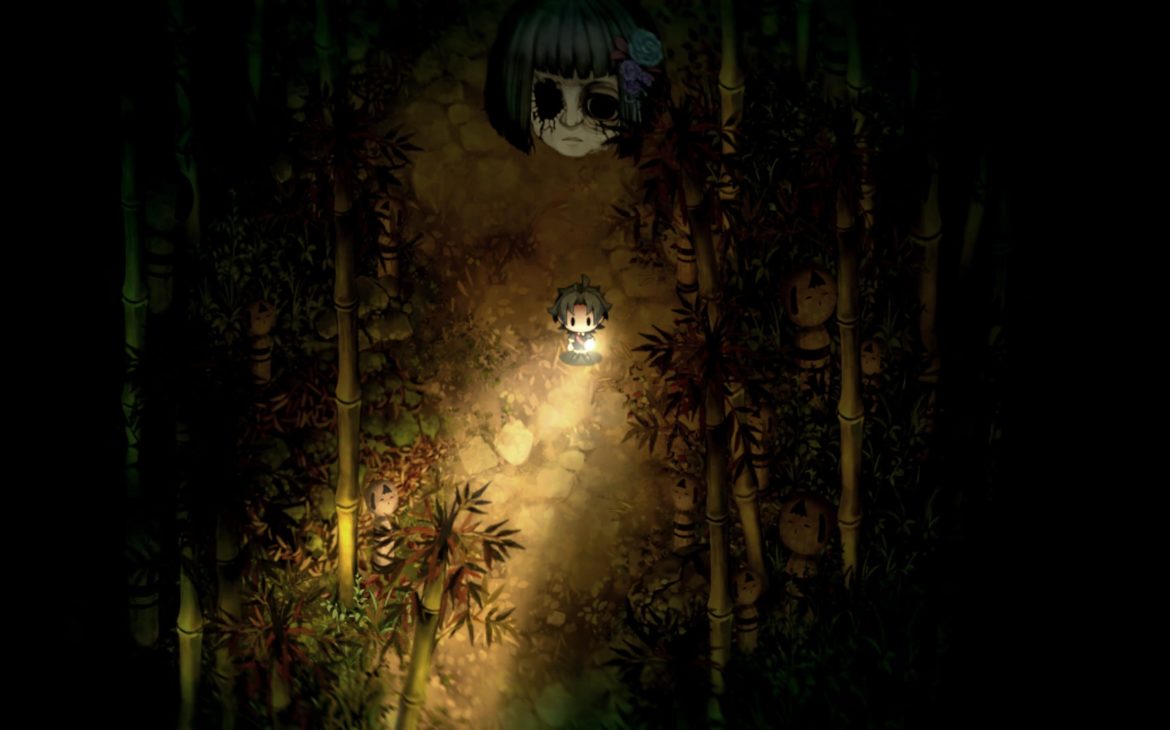
I See That Town
The structure of the game is non-linear in its approach for the most part. You start off exploring the town until you come across a trinket that triggers the start of a memory. This spurs you on to chase that lead as it tells you to find the area where your core memory resides. Each core memory progresses the narrative as it’ll hint to why you’re in this ghost town in the first place.
They all relate to modern urban legends of ghost stories that all have that creepypasta feel to them. You’ll come across notes and signs that teach you more about the hauntings whilst it’s happening to you. The majority of the tales you discover and experience are deeply unsettling and at the core often tragic. It feels like a ghost ride that hasn’t made me anxious to continue on since P.T., and I don’t compare the two lightly. Whilst it looks like a cute hand painted game at first glance, it’s the sound scape, gameplay and gruesome design of the monsters that amalgamates not far off Silent Hill 2 – if It was Chibi.
As I mentioned earlier, the last quarter of Yomawari runs out of steam. The trudging pace remains throughout dampening the first few hours as you start to familiarise with the ghouly does and don’ts. You collect pebbles and paper planes to be used for distractions, but besides them being used for puzzle purposes, they felt a little moot. You can pray at Jizo Statues if you have enough coin, which acts as save points and fast travel spots; but in the early game they’re far and few between and with barely a checkpoint system outside of the dungeons, it can get frustrating when you keep dying.
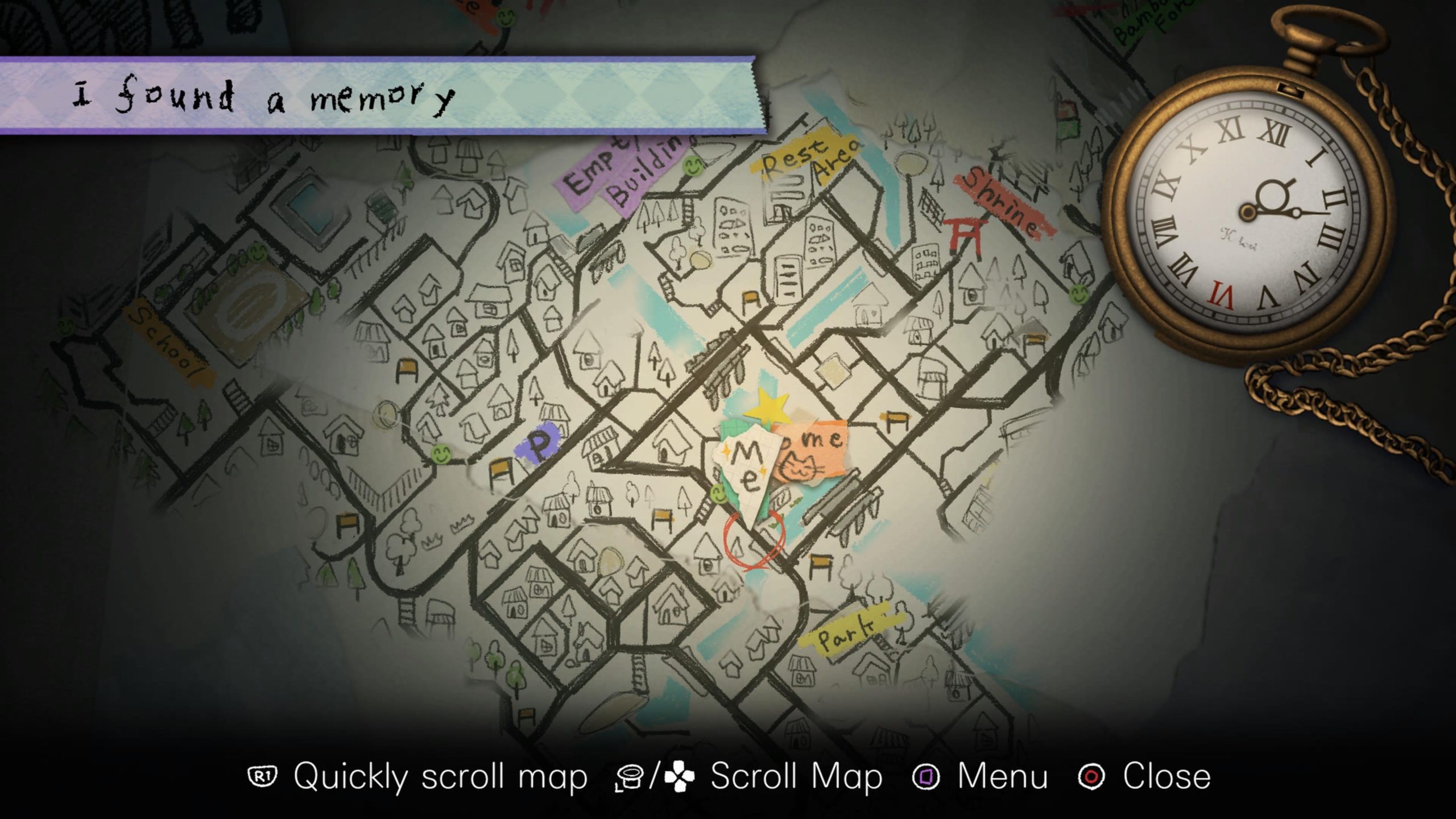
The Night Is Still Young
I’ve mentioned the combination of aspects creating the magic of fear, but the visuals definitely sell the unease when playing. Your created character – no matter how you make them – always looks naïve and doughy eyed in the Chibi style. I mentioned that the customisation is limited but all of it is hand-painted aesthetic look great. A lot of this child-like personality bleeds into the UI and Menus. Opening up the map is all hand drawn with crayon, as if created by your character.
Same goes for your backpack that has everything you find on the way in it, all described with young innocence. It’s such a fantastic touch on immersing me into the perspective. All that alongside the overworld, offer some beautifully crafted visuals. The use of colour stands out to look real life but off kilter, like a nightmare. The hue of red/orange contrasting with the night time navy blues makes the town look incredible at night.
Paired with the amount of detail to the levels creating an unnerving feeling of a town that once had hope. There is an unbelievable amount of variety across the town that’s all hand painted. Each individual area is unique in their own right. From the Rice Fields to the Port, all provide their own methods of scares. You feel swallowed by the surroundings and the isometric perspective makes a humble town feel like a whole city. That could be due to the pace of your character, but everything outsizes you making you feel overwhelmed.
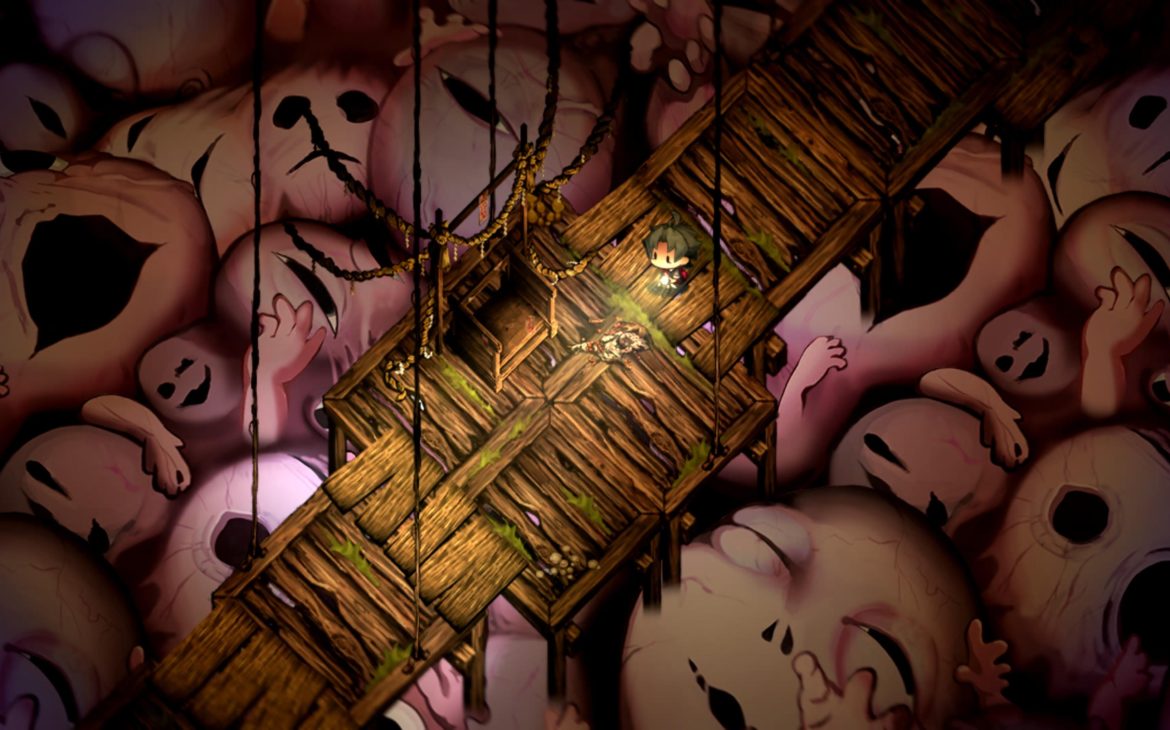
What’s A Star?
The town isn’t what makes Yomawari scary of course, but it’s a great template to fill the horrors with. What makes it scary are the impressive variety of spirits. Some are hand painted, befitting the world but it’s the ones that use their own art style that makes it that much more frightful. The change in art just builds the notion that these horrors have come through another world to kill you. Each of them is expertly designed to facilitate every known fear. Most of them are familiar to Japanese folklore, this doesn’t only influence the design but sometimes how you deal with them. Japan has so many distinctive ghost stories and they’re amazingly recreated in Yomawari: Lost in the Dark. If you’re a fan of horror – more specifically Japanese horror – then experiencing the evil across the town will be a delight.
There’s a brilliant piano led theme for the game sounding forlorn, matching the tone of the game. It’s used criminally sparingly though, as I’ve only heard it during the title card and credits. If they used it during the cut scenes that are only text boxes and animations, it would elevate the emotion they’re trying to portray in the story. However, the lack of audio in the moment-to-moment gameplay – outside of your footsteps and crickets – makes the dirges of the spirits stand out when you get closer to them. It enhances the fear factor as you usually hear them along with the increased heart rate before seeing them, making it a question of when they’ll show up, not if.
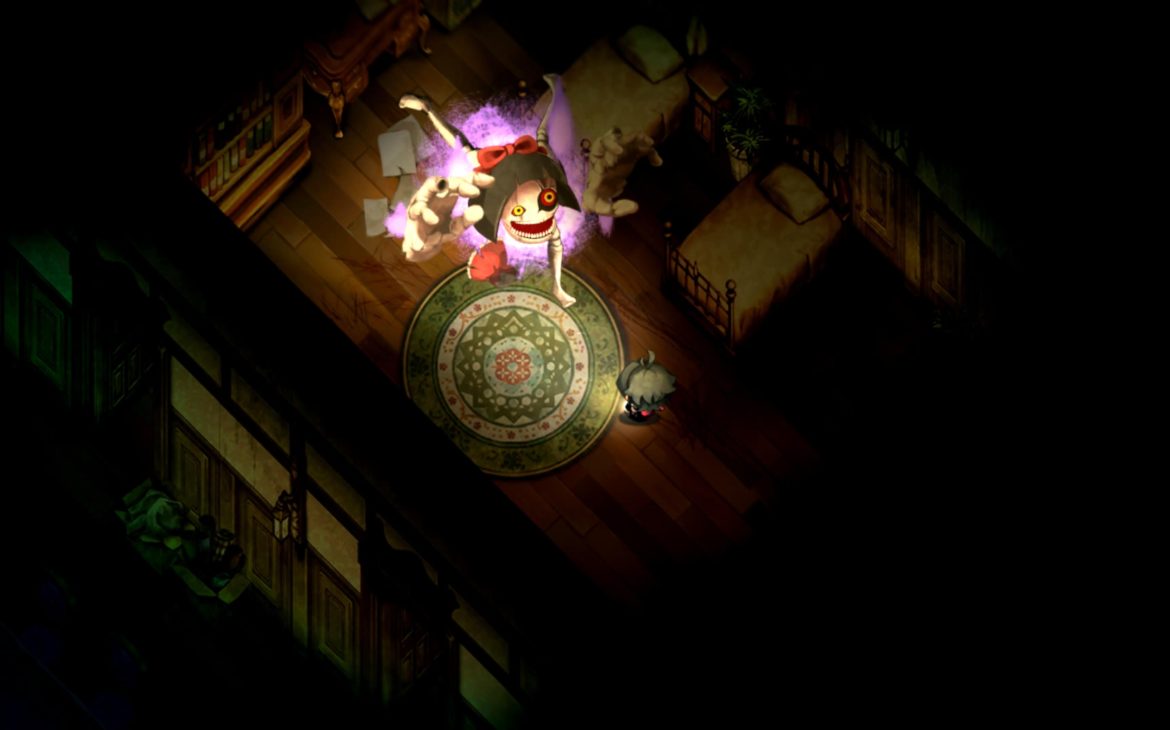
In The Dawn
Yomawari: Lost in the Dark feels like a few steps forward and a couple back when lined up with the rest of the series. The execution of dealing with the enemies is a great addition, but they’ve left out parts in previous games that could’ve made it better. The scale of the story is spread so thin that it gave me no good reason to finish it in the end. I’ve put 17 hours into a game that feels like it should be sub 10. Some of it is due to trying to find all the secrets for 100%. Though it’s mostly spent frustratingly backtracking, for an ending I’m not even sure could quell how disheartened I was to find out I didn’t beat it.
The presentation and the fear factor of Yomawari: Lost in the Dark leave a great first impression. The beautifully crafted visuals and moment-to-moment potential horror you face makes it an unnerving experience that’s hard to shake. However, the more you play, the less you’re rewarded with actual reasoning from the story. It’s a gut punch to persevere in the final act. This may be appealing to fans of the series but it didn’t make a new one of me by the end.

Yomawari: Lost in the Dark is out now on PlayStation 4 (review platform), Nintendo Switch and PC (Steam)
Developer: Nippon Ichi Software
Publisher: NIS America
Disclaimer: In order to complete this review, we were provided with a promotional code from the publisher. For our full review policy, please go here.
If you enjoyed this article or any more of our content, please consider our Patreon.
Make sure to follow Finger Guns on our social channels. Twitter, Facebook, Twitch, Spotify or Apple Podcasts – to keep up to date on our news, reviews and features.
